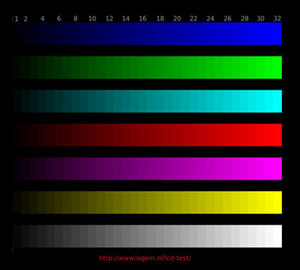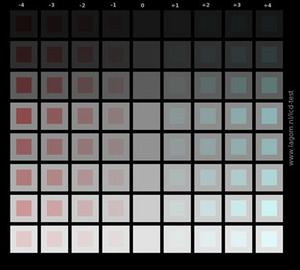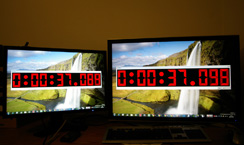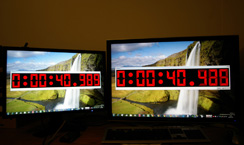Objective Image Quality Analysis
It's been an awfully long time coming. But at last we have a 22-inch monitor that blitzes our image quality tests. As usual, we ran the P221W through the Lagom suite of image quality tests, a handy collection of benchmarks that are simple to use and yet reveal much about a monitor's characteristics in metrics such as colour rendering, contrast, viewing angles, pixel response and more.Immediately apparent is the sheer detail and control the high-contrast S-PVA panel packs. Evidence of compression is notable by its absence with good extension apparent in both black and white scales. It's a similar story in colour scales, with truly exceptional definition at both extremities.
Just as impressive is the awesome colour stability the P221W maintains when viewed off centre. This monitor is about as good as it gets when it comes to viewing angles. You really do have to view it from a ridiculously obtuse vantage point before any significant loss of colour fidelity is visible.
Of course, this much we had largely expected from what is a brand new S-PVA panel. However, we weren't quite sure what to expect in terms of responsiveness. The good news is that pixel response is excellent in the Lagom response test with minimal flashing of the animated test gif. Unfortunately, the overdrive technology NEC has used to achieve it appears to come at a cost. Both input lag and inverse ghosting make an unwelcome appearance.
Admittedly, the P221W's lag compared with a typical IPS or TN monitor is not enormous, probably in the 20ms range. It's not enough to cause a nuisance in day-to-day desktop work and window juggling. But it does slightly compromise this monitor as a gaming weapon, not that NEC had that usage model in mind though. As for the inverse ghosting problem, again, it's only an issue with moving images and so unlikely to bother professional designers and image editors, but it is an occasionally unsightly flaw (see video).
Overall, it's extremely refreshing to experience a 22-inch monitor that doesn't have inherent deficiencies requiring extensive tweaking to offset. It has a fundamental rightness that means calibration is all about successfully dialling in the correct colour space rather than the tedious TN tradition involving ineffectual efforts to compensate for flaws.

MSI MPG Velox 100R Chassis Review
October 14 2021 | 15:04
















Want to comment? Please log in.